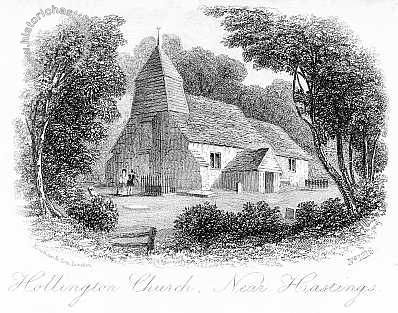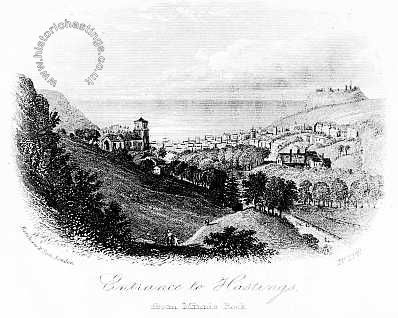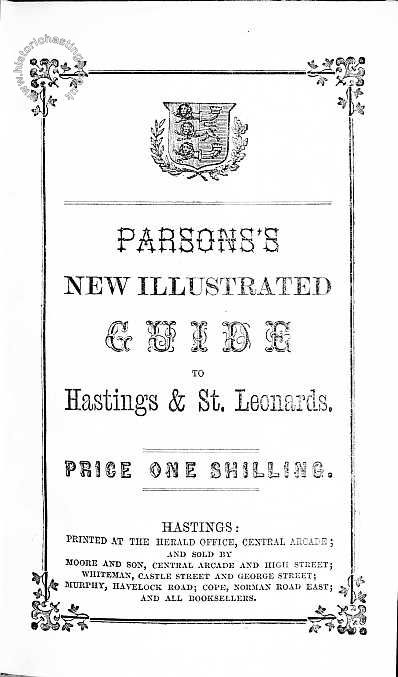
Frontispiece – note list of outlets where the guide can be bought.
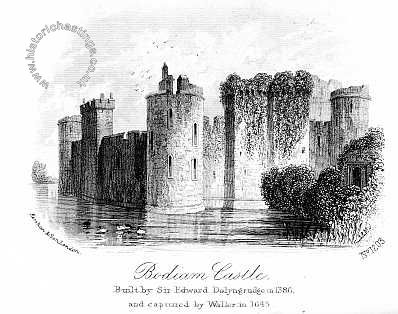
Bodiam Castle, an example of a place to visit and little changed today.
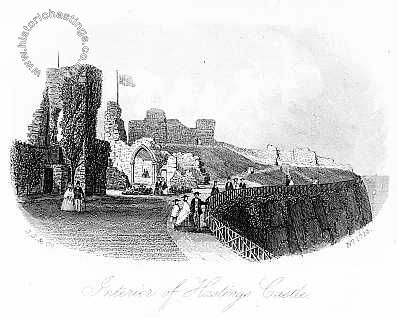
Interior of Hastings Castle – not dissimilar to today, the curve where Pelham Crescent below was carved out can clearly be seen.
Parsons’s New Illustrated Guide to Hastings and St Leonards 1864
Frederick James ( FJ ) Parsons was born in Rye in 1844 and is the man usually associated with the founding of the Hastings and St Leonards Observer. His father, Isaac had installed a hand press in a shed in Rye where he printed the Rye Chronicle, probably as early as 1853 and in 1857 he started another new paper, The Hastings and St Leonards Times and General Advertiser.
According to historian Steve Peak, in his book “the Hastings Papers” The first newspaper to have the name Hastings and St Leonards Observer was launched in late 1859 or early 1860, shortly after the demise of the Hastings and St Leonards Times, and was not published by Parsons at all but by a man called Joseph Henry Knight, a gardener from Battle, and printed at no 34 High Street, Hastings. The newspaper, we are told, was poorly printed on cheap paper and full of typos.
In 1863 FJ Parsons, aged 19 and his father opened an office and print works in Hastings in the Central Arcade with FJ taking control the following year. The Central Arcade occupied the area under the Music Hall which had opened in 1858, and is now better known as Yates’ Wine Bar between Havelock Road and Robertson Street. It was from here, the Herald office, that the guide was to appear in 1864 (the office was named for the ‘South Eastern Advertiser’, subtitled ‘Rye Chronicle and H&SL Herald’ following its relaunch in 1861) and a further two years was to pass before the youthful FJ Parsons acquired the Hastings and St Leonards Observer. By 1866 ‘The Observer’, as it is usually known, proclaimed that it was ‘Printed and Published by the proprietor, Frederick James Parsons at the Machine Printing Works, 21 Havelock Road’ – the rear of which may have also been the rear of the Central Arcade address. Was the guide therefore the very first publication from young F J Parsons?
Parsons’s New Illustrated Guide to Hastings and St Leonards was a pocket-sized volume with, despite the title, only four illustrations, and these were bought-in, three from a London publisher Kershaw & Sons and one from another publisher ‘JS & Co’. These engravings were also available independently, with others from the series, separately in bound volumes in differing permutations from various outlets and were very similar in format to prints published by ‘Rock & Co’, even down to their size, oval shape, palace script typeface for the title and the print reference number on the lower right of the picture and the publisher’s name lower left. The only difference appears to be that Rock’s prints usually included a date. The 116 pages of the guide contains useful information such as names and addresses of surgeons, doctors and dentists, Hotels, places of worship and details of bathing machines and the cost of hiring carriages. There are the usual descriptions of places to visit in the surrounding area. Parsons informs us there were two arcades, Pelham, under Pelham Crescent and the Central Arcade where “The Hastings & St.Leonards Herald, the best local paper, is published here” - Queens Arcade that we know today was not yet built and the 1861 census announced that the population of Hastings was approaching 26,000.
A brand new guide under the F J Parsons imprint was not to appear until 1876
